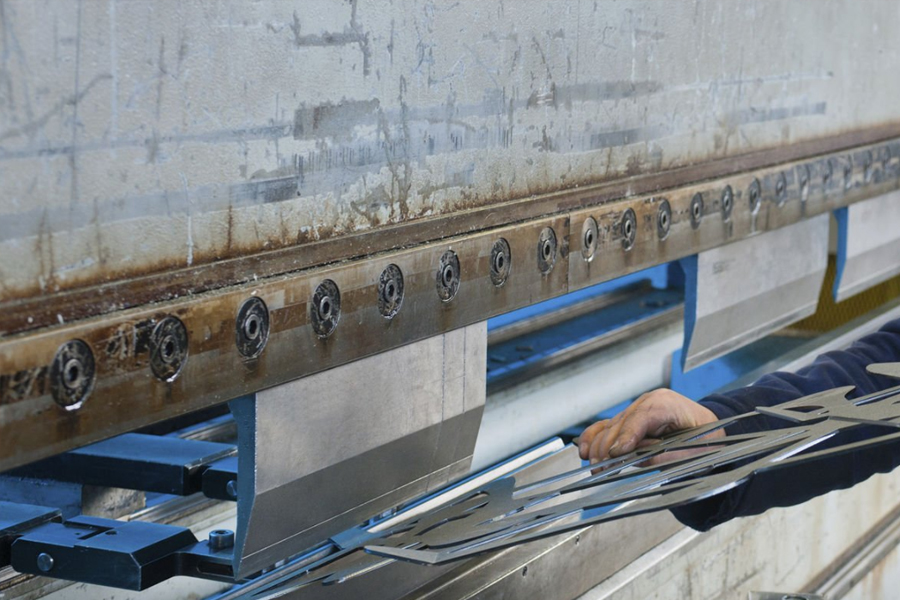
Sheet Metal Processing: Shear Force and Sheet Toughness Correlation
Release time:2025-02-07 Click:80Among the many processes of sheet metal processing, the shearing process plays a pivotal role, and the inherent relationship between shearing force and sheet toughness is the key factor that determines the processing quality and efficiency.
Sheet metal shearing, in simple terms, is to use specific tools or equipment to apply shearing force to the sheet so that the sheet is separated according to the predetermined contour. When a sheet metal shearing machine is turned on, the tool falls quickly and cooperates with the cutting board to cut the sheet placed in between.
The size of the shearing force is crucial. If the shearing force is too small, facing a sheet with strong toughness, it is like an ant trying to shake a tree, and the sheet cannot be effectively cut. The tool will slip and rub on the surface of the sheet, which will not only cause scratches and damage on the surface of the sheet, but also greatly reduce the processing accuracy and seriously affect production efficiency. For example, in automobile manufacturing, some sheet metal parts used to strengthen the body frame have a high toughness. If the shearing force is insufficient, the cutting task cannot be completed at all.

On the contrary, excessive shearing force is not a good thing. For sheets with average toughness, excessive shearing force will cause excessive deformation or even tearing of the sheet at the moment of cutting. Imagine using a pair of scissors that are too sharp and too strong to cut a piece of thin paper. The edges of the paper will often be irregularly damaged, and the same is true for the sheet. This will result in a rough cut, and additional grinding and finishing processes will be required later, increasing production costs and time costs.
The toughness of the sheet, like a conductor hidden behind the scenes, silently affects every link of the shearing process. The sheet with high toughness has strong internal atomic bonding and can withstand large external forces without brittle fracture. In the field of aerospace, some sheet metal sheets used for aircraft shells need to have excellent toughness to withstand complex working conditions such as airflow impact and temperature changes during flight. At this time, the sheet metal processing needs to match the corresponding strong shear force, and optimize the tool geometry, cutting angle and other parameters to ensure that it can be cut smoothly and retain the performance advantages of the sheet to the greatest extent.

For sheets with lower toughness, more "careful" processing is required. For example, some thin sheet metal parts for decoration, although the strength requirements are not high, if the shear force is not properly controlled, it is also easy to have defects such as edge collapse and missing corners. Sheet metal processing companies usually choose sharper and fine-edged tools to accurately complete cutting with relatively gentle shearing force to ensure the beauty and dimensional accuracy of the product.
In the actual sheet metal processing production line, technicians need to cleverly balance the shearing force and sheet toughness. By pre-testing the sheet performance, accurately calculating the required shearing force, debugging equipment parameters, and selecting suitable tools, they can be at ease in the key link of shearing, process high-quality sheet metal products, meet the needs of various fields from architectural decoration to high-end manufacturing, and promote the vigorous development of the sheet metal processing industry.